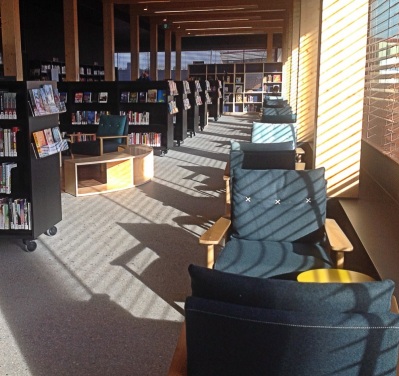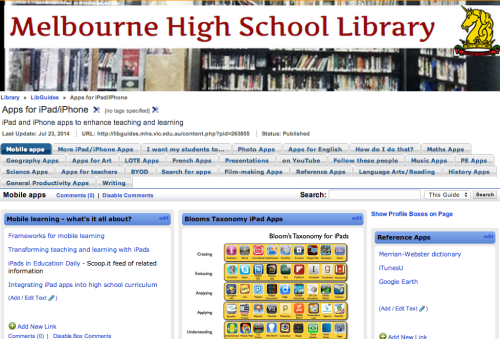This is the tweet from Howard Rheingold that grabbed my attention.
127 blogs for #ccourses — connect yours if you want to participate: http://t.co/FDIeCzplnS
— Howard Rheingold (@hrheingold) September 6, 2014
It looked worthwhile. I investigated. I’ve been looking for the right sort of professional development, something interactive and engaging with community. Lately I find that I learn best by connecting with others rather than from traditional lecture style sessions. The one day conference isn’t doing it for me any more. The blogging network also appeals to me, and I’ve been running dry with my professional blog. Time to refuel.
The background:
The goal for Connected Courses is to build an inclusive and expansive network of teachers and students, and provide educational offerings that make high quality, meaningful, and socially connected learning available to everyone. The go-at-your-own-pace collaborative course is free and open to all.
Mission
Connected Courses is a collaborative network of faculty in higher education developing online, open courses that embody the principles of connected learning and the values of the open web.
Our goal is to build an inclusive and expansive network of teachers, students, and educational offerings that makes high quality, meaningful, and socially connected learning available to everyone.
Our Course on Connected Courses
For Fall 2014, our major focus is on running a course for developing and teaching connected courses. The course is designed and taught by faculty from diverse institutions, some of whom are the folks behind successful connected courses such as FemTechNet, ds106, phonar, and the National Writing Project CLMOOC. You can find the syllabus here, and the people involved here.
The videos address issues I’ve been thinking about: what if our education system is working because it’s been designed for a world that no longer exists? It’s something I’ve been thinking about a lot lately – are we preparing our students for their future world of tertiary studies and work? I’m in – I can use all the help I can get in making sense of how to move forward in a rapidly changing world.
I asked Howard Rheingold if I could join Connected Courses even though it was designed for higher education people, and was happy when he said ‘why not?’
@taniatorikova@amyburvall is participating and she teaches high school. Why not? I wish I had been challenged with a connected course in HS
— Howard Rheingold (@hrheingold) September 7, 2014
I’m excited to be learning with the vision:
A world where all young people have access to participatory, interest-driven learning that connects to educational, civic, and career opportunities.
The Alliance supports the expansion and influence of a network of educators, experts, and youth-serving organizations mobilizing new technology in the service of equity, access and opportunity for all young people.
I’m excited by the leadership line-up and I believe in connected learning environments:
Connected learning environments link learning in school, home and community because learners achieve best when their learning is reinforced and supported in multiple settings. Online platforms can make learning resources abundant, accessible and visible across all learner settings;
in peer supported participation for learning:
Connected learning thrives in a socially meaningful and knowledge-rich ecology of ongoing participation, self-expression and recognition. In their everyday exchanges with peers and friends, young people fluidly contribute, share and give feedback. Powered with possibilities made available by today’s social media, this peer culture can produce learning that’s engaging and powerful;
in interest-powered learning:
Interests foster the drive to gain knowledge and expertise. Research has repeatedly shown that when the topic is personally interesting and relevant, learners achieve much higher-order learning outcomes. Connected learning views interests and passions that are developed in a social context as essential elements;
in production-centred learning:
Connected learning prizes the learning that comes from actively producing, creating, experimenting and designing because it promotes skills and dispositions for lifelong learning and for making meaningful contributions to today’s rapidly changing work and social conditions;
in shared purpose in learning:
Today’s social media and web-based communities provide unprecedented opportunities for caring adults, teachers, parents, learners and their peers to share interests and contribute to a common purpose. The potential of cross-generational learning and connection unfolds when centered on common goals;
in the importance of academically oriented learning:
Connected learning recognizes the importance of academic success for intellectual growth and as an avenue towards economic and political opportunity. When academic studies and institutions draw from and connect to young people’s peer culture, communities and interest-driven pursuits, learners flourish and realize their true potential.
And the icing on the cake is that this is going to be a guilt-free learning zone, so that being busy and missing things will not be a problem.
“As we kick-off Connected Courses, I officially declare this a guilt-free learning zone.” http://t.co/QnMUQiARol #CCourses
— #ConnectedLearning (@TheCLAlliance) September 6, 2014
As we collectively kick-off Connected Courses I officially declare this a guilt-free learning zone. What a relief to know that even though you might have missed a couple weeks of Connected Courses (or you never even heard about it until mid-October) you can still jump in and your participation is welcome. What a relief to know that you can customize and calibrate your “take-away” from this experience based on what matters to you. What a relief to know that even if you would rather lurk-to-learn, you are still a valued member of our community of co-learners. (Mia Zamora’s post)
Will you join me?


















